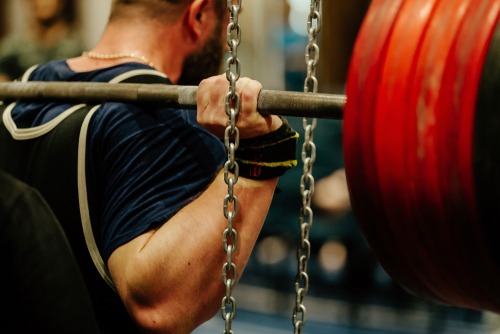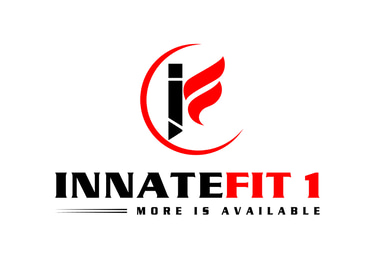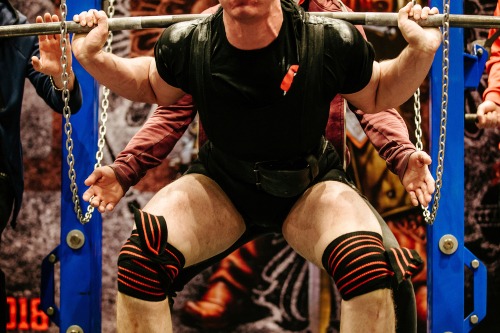Visit Innatefit1.com for exercise wear and equipment!!!
The Science of Beginner Strength Periodization Made Easy for Everyday Lifters
Discover the science of beginner strength periodization made simple for everyday lifters. Discover how a beginner micro cycle plan and hypertrophy periodization strategies can help prevent plateaus, build lasting strength, and maintain consistent workouts for long-term progress.
SELF-HELPWORKOUTSMEN'S HEALTHCONFIDENCE BUILDINGFITNESS TIPSSTRENGTH TRAINING
Joseph Battle
10/3/20256 min read


Introduction
Everyday lifters often face a common roadblock: they want to get stronger and build muscle, but progress stalls after a few weeks. Initially, the body responds quickly to training stress, and strength gains occur rapidly. However, without a structured approach, the same workouts that once felt challenging stop producing results. This is where beginner strength periodization becomes essential.
Periodization is not just for professional athletes or competitive powerlifters; it is a proven strategy that works equally well for beginners who want to feel stronger, look better, and avoid the dreaded plateau. By breaking training into planned cycles—macrocycles, mesocycles, and microcycles—lifters can ensure steady gains, recovery, and long-term progress.
In this article, we’ll simplify the science of periodization and explore how everyday lifters can implement beginner hypertrophy periodization and a structured beginner microcycle plan to maximize results while keeping workouts enjoyable and sustainable. Disclaimer: This post contains affiliate links, where if you make a purchase, I may receive a commission at no cost to you.
Beginner Strength Periodization Simplified: Understanding the Basics of Training Cycles
At first glance, the concept of periodization may seem overly technical, but its core principle is straightforward: varying training over time promotes continual adaptation. For beginners, this approach prevents burnout and ensures consistent muscle growth and strength.
Training cycles are typically broken down into three key levels:
Macrocycle – This refers to the long-term plan, typically spanning six months to a year. For beginners, a macrocycle may simply be a general roadmap focused on building foundational strength and endurance.
Mesocycle – This is a medium-term phase within the macrocycle, lasting four to eight weeks. In a beginner’s context, a mesocycle might emphasize hypertrophy (muscle growth), strength, or endurance.
Microcycle – The shortest training phase, usually lasting one week. The beginner microcycle plan becomes the backbone of daily and weekly workouts. It determines the exercises, sets, reps, and rest periods for each session.
For example, a beginner’s macrocycle may last 12 weeks. Within it, they could complete three four-week mesocycles, each with a slightly different emphasis: hypertrophy, strength, and muscular endurance. Every week within those mesocycles, the beginner microcycle plan outlines exactly what to do in the gym. Lifting Shoes.
Why is this necessary? Because the human body adapts quickly to repeated stress. Without change, progress halts. By gradually increasing intensity or altering variables such as volume and rest, periodization keeps the body guessing and growing.
The Role of a Beginner Microcycle Plan in Preventing Plateaus
A plateau occurs when the body no longer responds to the same training stimulus. Beginners often experience this after a few weeks of repeating identical workouts. A beginner microcycle plan is the antidote, introducing just enough variation to keep the body adapting.
Let’s consider a practical example:
Week 1 (Microcycle 1): Focus on foundational lifts like squats, push-ups, rows, and planks. Volume is moderate—3 sets of 10–12 reps.
Week 2 (Microcycle 2): Slightly increase the weight while keeping reps the same.
Week 3 (Microcycle 3): Maintain the weight but increase the number of sets.
Week 4 (Microcycle 4): Lower the reps (6–8), increase the weight, and extend rest periods for a strength-focused week.
This progressive structure keeps the muscles under varied stress, preventing stagnation. For beginners, this approach ensures they can continue to grow stronger without overtraining or getting bored. Shoes for Training.
Additionally, the beginner microcycle plan plays a vital role in balancing stress and recovery. Each week should include at least one active recovery day—such as light cardio, mobility work, or yoga—to allow the nervous system and muscles to recover. This balance ensures that strength gains are sustainable, not fleeting.
Beginner Hypertrophy Periodization Strategies for Long-Term Muscle Growth
Strength is one side of the coin; hypertrophy, or muscle growth, is the other. For beginners, beginner hypertrophy periodization provides a structured approach to move beyond random workouts and achieve steady growth over time. Lifting Straps.
Here’s how hypertrophy-focused periodization works:
Volume First, Intensity Later – Beginners should start with moderate loads (60–70% of their max effort) and focus on higher reps (10–12). Over time, as muscles adapt, they can gradually increase intensity while reducing the number of reps.
Progressive Overload – This principle involves adding small increments of weight, sets, or reps over weeks. For example, a beginner might increase their dumbbell chest press by 2–5 pounds every two weeks, while keeping the number of reps consistent.
Exercise Rotation – To prevent adaptation, vary exercises every few mesocycles. For example, swap barbell squats for goblet squats or dumbbell presses for push-ups with added resistance.
Deload Phases – Every 4–6 weeks, reduce intensity or volume to allow the body to recover and adapt. This prevents overtraining and primes the body for the next cycle.
A sample beginner hypertrophy periodization program could look like this:
Weeks 1–4 (Hypertrophy Phase 1): Focus on 10–12 reps per set with moderate weights.
Weeks 5–8 (Hypertrophy Phase 2): Transition to heavier weights for 8–10 reps per set.
Weeks 9–12 (Strength Phase): Lower reps to 5–6 with heavier loads to build raw strength.
This flow ensures both size and strength gains while preventing the monotony that drives many beginners away from consistent training.
Practical Ways to Implement Beginner Strength Periodization in Daily Training
Theory is valuable, but beginners often ask: How do I apply this in the gym right now? The answer lies in simple, structured weekly plans. Protect the Wrist.
Here’s a practical beginner microcycle plan applied to a 3-day-per-week schedule:
Day 1 (Full-Body Strength): Squats, bench press, barbell row, planks.
Day 2 (Hypertrophy Focus): Lunges, overhead press, dumbbell chest fly, bicep curls, triceps extensions.
Day 3 (Endurance & Stability): Kettlebell swings, push-ups, single-leg RDLs, farmer’s carries.
Over the course of 4–6 weeks, lifters can:
Gradually increase weights.
Rotate accessory exercises.
Adjust rep ranges according to periodization principles.
For those training 4–5 days a week, workouts can be split into upper and lower body sessions, alternating between hypertrophy and strength focus.
The beauty of beginner strength periodization lies in its adaptability. Whether someone trains at home with resistance bands or in a gym with full equipment, the same principles apply vary the load, track progress, and stick to a structured plan.
Fine-Tuning Your Beginner Microcycle Plan for Strength, Recovery, and Consistency
No training plan is set in stone. The best programs are flexible, adjusting based on performance, recovery, and life’s demands. Fine-tuning a beginner microcycle plan means regularly checking in on three critical areas:
Strength Progression – Track weights, sets, and reps. If you’re consistently hitting the top of a rep range, it’s time to increase weight.
Recovery – Beginners often underestimate recovery. Sleep, hydration, and nutrition all play pivotal roles. If fatigue lingers or motivation dips, it may be time to scale back.
Consistency – A great plan only works if followed consistently. Aim for 3–4 workouts per week, adjusting intensity rather than skipping sessions entirely.
Another fine-tuning tool is auto-regulation, which involves adjusting training intensity based on how you feel. If a workout feels tough, scale back. If energy is high, push further. This balance allows for steady progression without risking burnout. Power Belt.
Importantly, keep workouts enjoyable. Beginners who enjoy their training are far more likely to stay consistent. That might mean incorporating favorite exercises, training with a friend, or mixing in recreational activities like hiking or cycling.
Conclusion
Beginner strength periodization is not about complicating training; it’s about making progress predictable and sustainable. By structuring workouts into cycles, implementing a beginner microcycle plan, and using beginner hypertrophy periodization strategies, everyday lifters can avoid plateaus, build lasting strength, and foster long-term consistency.
The key is simplicity: start with a clear plan, progress gradually, listen to your body, and stay consistent. Periodization transforms training from guesswork into a science-backed method that delivers results. For beginners eager to grow stronger and healthier, it’s the roadmap that ensures steady progress without burnout or wasted effort.




